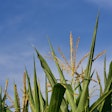
As the Midwest braces for the growing season, the interplay between weather patterns and agricultural productivity takes center stage, underscoring the crucial role of weather conditions in the Corn Belt's crop production. With variations in temperatures, precipitation, and the potential for La Niña events, the weather in the Midwest is a critical determinant of corn and soybean yields. These crops not only form the bedrock of the region’s agricultural landscape but also significantly contribute to global food supply chains, making the prediction and understanding of weather impacts a primary concern for farmers, agribusinesses and policymakers alike.
Understanding the 2024 Midwest Weather Forecast
The 2024 Midwest weather forecast indicates a varied climate pattern influenced by several factors, including a strong El Niño event. This phenomenon is characterized by warmer-than-normal water temperatures in the Pacific, which significantly impacts weather across the Midwest. Forecast models suggest that the region will experience warmer-than-average temperatures, particularly pronounced in the northern parts . These conditions align with broader patterns of warmer temperatures across the northern United States.
Precipitation forecasts are mixed, with some areas near the Great Lakes predicted to see drier-than-average conditions, while other parts may experience near or slightly wetter conditions . Snowfall is expected to be above normal in several parts of the Midwest, with the snowiest periods likely occurring in late November, mid-to-late December, mid-January, and early February . The variability in precipitation and the influence of El Niño suggest that this winter could have unpredictable elements, making regular weather updates more important than ever for agricultural planning and management.
Global climate phenomena, particularly El Niño and La Niña, play a crucial role in shaping the weather patterns in the Midwest. The current forecasts indicate a strong likelihood of La Niña developing during July-September, with a 65% chance, and persisting into the Northern Hemisphere winter 2024-25, with an 85% chance during November-January . La Niña events typically bring cooler temperatures, which could mitigate some of the warming effects predicted by the El Niño phase earlier in the year.
Moreover, above-normal temperatures are favored across all of Central Region, with the highest probabilities (60-80%) affecting western Colorado and other parts of the Midwest . This warming trend is expected to increase energy demands, particularly for air conditioning, as temperatures rise. Drier-than-normal conditions are also favored across most of the region, which could impact water levels and agricultural practices .
The interplay between El Niño and La Niña, along with the predicted temperature increases and varied precipitation, underscores the complexity of the weather dynamics that will influence the 2024 growing season in the Midwest. Understanding these patterns is vital for farmers and agricultural stakeholders to prepare adequately for the challenges and opportunities that lie ahead in crop production.
Impact of Weather on Corn Yield Potential
Corn's origin in the highlands of central Mexico, where daytime temperatures are warm and nights are cool, has imparted a sensitivity to extreme heat in modern corn varieties. This sensitivity is particularly evident during the pollination phase, where temperatures above 95 degrees Fahrenheit can significantly depress pollen production . Additionally, prolonged heat reduces pollen viability, which can severely impact yield potential . Research indicates that corn yields decline when temperatures exceed 86 degrees Fahrenheit due to increased water stress and reduced photosynthetic efficiency . High nighttime temperatures further exacerbate the situation by increasing the plant's respiration rate, which leads to a higher consumption of sugars that could have been used for growth and development .
Corn yield potential is heavily dependent on adequate rainfall during critical growth stages. Excessive rainfall in the early growing season, as seen with the lingering effects of El Niño in the Midwest, can lead to planting delays and increased soil compaction, which in turn can hinder root development and water absorption . Conversely, a lack of sufficient water during the crucial month of July can lead to reduced yields, especially if the soil has already been compacted . It is essential for corn crops to have balanced moisture levels to avoid the detrimental effects of both drought and excessive water.
The growth stages from V5 to V14 are critical for determining the number of potential kernels per corn plant, which directly influences the final yield . During these stages, any stress from high temperatures or inadequate moisture can have a pronounced effect on yield potential. For instance, unusual heat spells in June can impact the ear size determination process, potentially reducing the number of kernels . Moreover, if corn is planted late, it may miss out on favorable early-season conditions, necessitating exceptionally good weather later in the season to achieve trendline yields . The ability of corn to withstand stress and maintain yield potential under varying weather conditions is a testament to its resilience, yet highlights the necessity for careful management and monitoring of weather patterns.
Impact of Weather on Soybean Yield Potential
Soybeans, similar to corn, exhibit a marked sensitivity to temperature variations, which significantly influences yield potentials. Optimal growth and development occur within a temperature range of 77 to 86 degrees Fahrenheit. When temperatures exceed this range, particularly during critical growth phases such as flowering and pod filling, the risk of reduced yields increases. High temperatures can lead to flower abortion, which directly impacts the number of pods per plant and the seeds per pod. Additionally, excessive heat during the night can hinder the recovery from daytime stress, further exacerbating the impact on soybean yields.
The growth and yield of soybeans are heavily reliant on adequate rainfall distribution throughout the growing season. Soybeans require sufficient moisture during the germination and vegetative growth stages but are particularly vulnerable to water stress during the reproductive stage. Insufficient rainfall can lead to reduced pod number and size, as well as decreased seed development. Conversely, excessive moisture, particularly close to harvest, can lead to diseases such as stem rot and pod mildew, which severely affect overall yield quality and quantity.
Soybeans face critical stress periods that can significantly impact yield potential. The stages from flowering to pod filling are crucial, as any stress during this period can reduce pod set and seed filling, directly affecting yield. Drought stress during these stages can lead to premature leaf drop and reduced photosynthetic activity, which in turn diminishes nutrient availability for seed development. Managing these stress periods through timely irrigation and choosing drought-resistant varieties can help mitigate some of these adverse effects and stabilize yield potential even under challenging weather conditions.
As the Midwest prepares for the 2024 growing season, the intricate relationship between weather patterns and agricultural output has been thoroughly explored, emphasizing the pivotal role of climate conditions in shaping corn and soybean yields. The discussion on the complex interactions between temperature, rainfall, and climate phenomena like El Niño and La Niña offers valuable insights into the challenges and opportunities that lie ahead for Midwestern farmers. Through a closer examination of weather forecasts and their implications, this article has highlighted the critical need for adaptive farming practices and innovative technologies to mitigate adverse effects and enhance crop productivity in the face of unpredictable weather conditions.
.jpg?auto=format%2Ccompress&crop=faces&fit=crop&h=48&q=70&w=48)


















